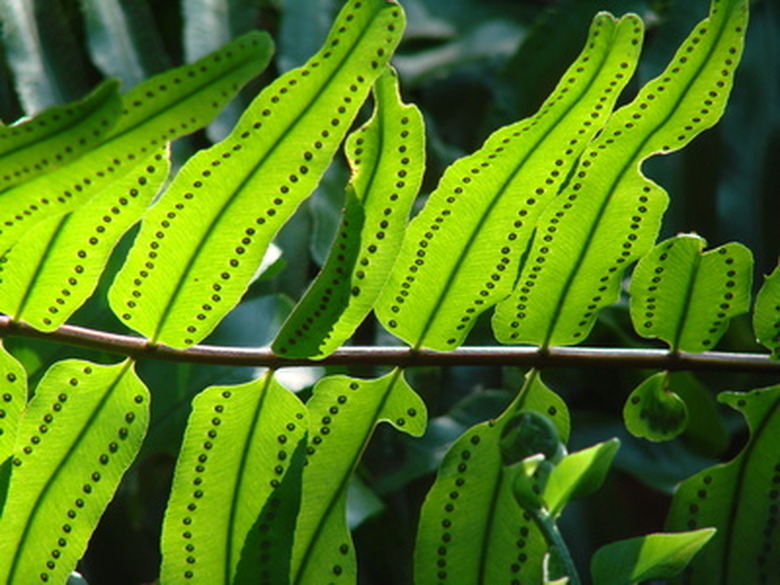Ecological Uses Of Seedless Vascular Plants
The four divisions of vascular plants reproduce by spores rather than by seeds. Although some of these plants do not have roots or leaves, all of them have xylem and phloem, which are vascular structures that transport water and nutrients. Seedless vascular plants include mosses and ferns.
Pterophyta
Plants in the Pterophyta division are the most familiar seedless vascular plants. They are commonly called ferns and have divided, feathery leaves called fronds. Ferns grow well in damp shady areas, such as woodlands or along stream banks, and the rhizomes and roots of ferns help prevent soil erosion. Coal was formed from the decayed remains of ferns eons ago.
- The four divisions of vascular plants reproduce by spores rather than by seeds.
- Although some of these plants do not have roots or leaves, all of them have xylem and phloem, which are vascular structures that transport water and nutrients.
Lycophyta
Plants in the Lycophyta division have single-veined leaves and grow in a wide variety of habitats. Lycopodiums and Selagineums are groundcover type plants and resemble ferns. Other plants in the Lycophyta division are club mosses, spike mosses and quillworts. These plants also help prevent erosion and are a component of coal.
Sphenophyta
Equisetum is the only genus in the Sphenophyta division. It is commonly called scouring rush, because the stems contain silica, or horsetail. It grows in marshy or waterlogged soil and can spread aggressively. Equisetums are also a component of soil.
- Plants in the Lycophyta division have single-veined leaves and grow in a wide variety of habitats.
- Lycopodiums and Selagineums are groundcover type plants and resemble ferns.
Psilophyta
Plants in the Psilophyta division of seedless vascular plants do not have true leaves or roots and are the simplest vascular plants. Whisk Ferns (Psilotum spp.) are members of this division and native to Florida and other tropical areas.
Seedless Plants Vs. Seed Plants
A rose is a rose by any other name, but does it grow by seeds or some other way? It may sound like an oxymoron to a novice gardener, but many types of plants reproduce through means other than growing and emitting tiny versions of themselves. Some seedless plants are asexual and can produce without any assistance, but they tend to not travel far because they use the immediate area to create more of the species. These include pincushion mosses and liverworts. Seed plants produce the spores via sexual reproduction. The difference between spores and seeds is plentiful. Spores are haploid and unicellular, which means they have only one set of chromosomes. Every species of seed plant is vascular, meaning the leaves hold water in the tissue of the plant. Indian puzzle plants grow well in water as well as near water, and they propagate quickly.
- Plants in the Psilophyta division of seedless vascular plants do not have true leaves or roots and are the simplest vascular plants.
- Some seedless plants are asexual and can produce without any assistance, but they tend to not travel far because they use the immediate area to create more of the species.
